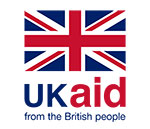Start-ups are key for driving economic growth and employment, particularly in low- and middle-income countries (LMICs) where markets and industries are less mature. In OECD countries, start-ups employ 20 per cent of youth and account for half of new jobs created. The role of start-ups in the economy continued during the COVID-19 pandemic, as many start-ups innovated in their ways of working and business models to survive – those that reacted fast and flexibly were able to thrive.
The digital health sector was put in the spotlight during COVID-19. To learn about how start-ups cope with the crisis, we caught up with oDoc, one of our Ecosystem Accelerator grantees, to understand the impact and long-term implications of the pandemic on their business. Below we highlight key takeaways from oDoc’s experience and considerations for start-ups to thrive in crises.
What is oDoc? The oDoc app connects doctors with patients, using mobile technology (smartphone app, SMS, voice, video) to provide access to high quality and affordable, primary healthcare. The solution serves all segments of the population, but it is specifically designed for low-income (blue collar) workers and rural populations that ordinarily would need to travel long distances to meet a qualified doctor.

Lesson 1: Adapting the business model can offset losses and generate permanent new revenue streams
Adaptability is key for resilience. Prior to the pandemic, 95 per cent of oDoc’s business was B2B, whereby corporates and insurance companies would buy subscriptions to provide healthcare coverage for their employees or policy holders. However, during the pandemic many organisations had to reduce costs. Companies’ spending on health benefits decreased while the demand for remote and accessible health services increased due to social distancing restrictions. In response, oDoc pivoted from a B2B to B2C model to sell directly to end users, offering pay-as-you-go (PAYG) consultations based on customers’ need for care.
oDoc’s adaptability provided them with a more stable financial stream when the B2B business dropped, resulting in a sustained business expansion and revenue growth when their B2B business line began to pick back up. Revenue splits are now approximately 50/50 between the B2B and B2C offerings, and oDoc now has over 200,000 registered users—a number that keeps growing.
oDoc is a well-known healthcare provider in Sri Lanka. Acquiring new customers was therefore relatively easy. While less established and smaller companies may not be able to do so with such ease, oDoc nevertheless provides a lesson on how remaining innovative can generate new customer acquisitions and revenue streams, even in times of crisis.
Lesson 2: Flexible pricing and customer payment plans can improve customer satisfaction and retention
Prior to the pandemic, oDoc offered subscription packages to companies for unlimited consultations. oDoc knew the demand and priced their products accordingly. Unsurprisingly, utilisation spiked at the onset of COVID-19, but companies affected by the pandemic struggled to pay on time, leaving employees potentially uncovered. oDoc opted to support their clients with extensions on payments to continue with services under the same subscription plans. As a result, customer retention has remained high throughout the pandemic, providing oDoc with increased sustainability and long-term revenue. Smaller companies may not have such flexibility with pricing, but prioritising customer retention where possible will lead to long term sustainability.
Lesson 3: Adapting the product to be digitally inclusive is crucial to reach customers across all segments of society
Prior to the pandemic, oDoc served corporate customers (i.e. blue or white-collar employees) that had access to a device, such as a tablet or a mobile phone, and connectivity. When telemedicine services were more widely adopted due to the pandemic, oDoc implemented services accessible via SMS and voice calls to increase their reach and access markets that were not served through their previous service delivery model. Sri Lanka has substantial 4G coverage with unique mobile subscribers accounting for 75 per cent of the population [1]. Ensuring that their services were accessible via low-tech and internet-enabled mobile phones helped oDoc reach all segments of society.
Lesson 4: The benefits and strengths of partnerships are contextual
Partnerships are beneficial to start-ups, particularly when scaling and looking for brand recognition from customers. Partnerships can also help start-ups access additional funding opportunities, develop new services and products, and access new customer segments. For example, oDoc’s partnership with the Ministry of Health and the ICT Association of Sri Lanka helped to find and on-board new doctors. Partnering organisations can also benefit from fresh and innovative solutions and ways of working brought into the partnership by start-ups.
Digital health companies have partnered with companies to increase their reach and be successfully deployed. For instance, a start-up in Bangladesh called Tonic was almost purely distributed through Telenor’s user base. oDoc attempted to use this approach by partnering with Hutch to offer a subscription-based product to Hutch’s customer base.
However, the take-up for oDoc was much lower than expected. After conducting a series of focus groups, oDoc discovered that the bottom of the pyramid in Sri Lanka follow the ‘sachet principle of purchasing’, meaning consumers are more likely to pay smaller but more frequent amounts for products and services when needed in favour of bulk or advance purchases (i.e. purchasing sachets of shampoo rather than large bottles). Hence, oDoc have since pivoted to offer to a PAYG model. Herein lies the lesson that partnership models are not necessarily a one-size-fits-all solution and must be context-specific.
Lesson 5: COVID-19 put the spotlight on digital health, but more needs to be done to create enabling environments
During the pandemic, healthcare systems across the globe adopted digital health solutions to adapt to the pressures of the increased numbers of infections. As a result, digital health is now widely adopted and the common business models have been legitimised, effectively delivering positive clinical and economic outcomes. Yet, adequate regulatory frameworks, standards and guidelines that govern digital data and applications are still needed in Sri Lanka and many LMICs. The advent of policies and regulations will likely have consequences for the ways in which oDoc and other digital health start-ups operate, but will also increase trust from customers and drive greater adoption.
oDoc received one of the GSMA COVID-19 Emergency Fund grants in 2020.
[1] GSMA Intelligence (2021).



